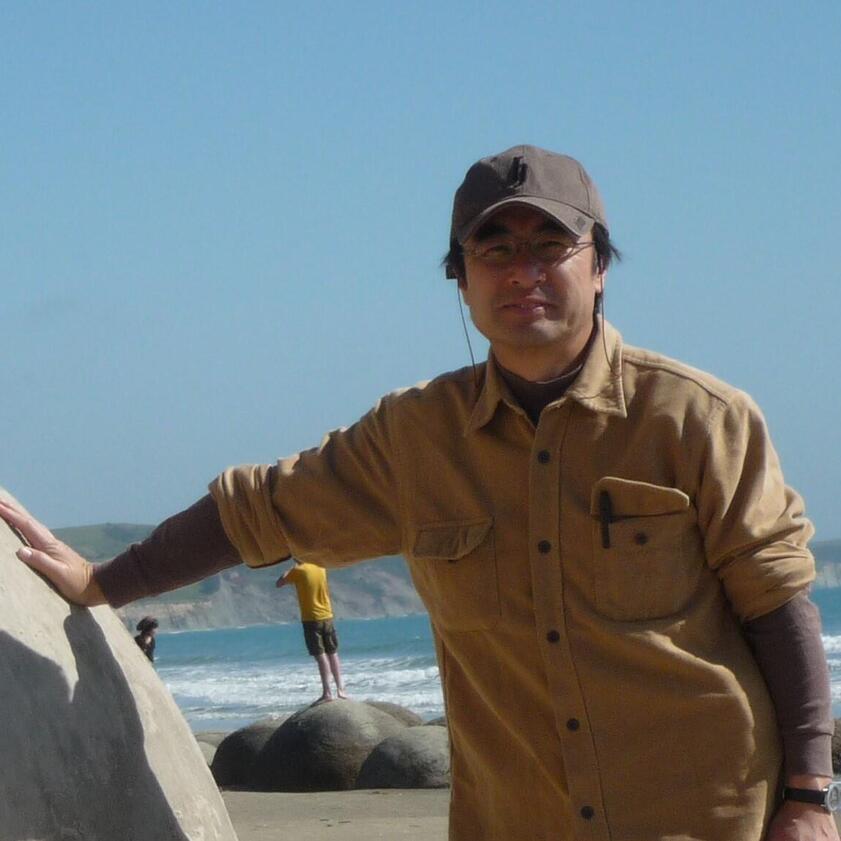Professor Ryuichiro Higashinaka

Researchers'
Professor
Hidekazu Yoshida
Nagoya University Museum
I specialize in earth sciences, and my motto is to learn from nature. To do this, I believe it is important to always "look," "think," and "act" with humility toward natural phenomena. After this familiar first phrase, there is more. My motto reminds me of the importance of actually seeing, thinking, and acting without being bound by preconceived notions.
In a single phrase, I call it Applied Geology, which is the study of understanding geo-scientific phenomena and applying them to engineering and environmental issues. My current research on spherical concretions, which exist on Earth and Mars, are one example of such unique natural phenomena. In particular for Earth’s spherical concretions, why do they become round and hard? Why are fossils in very good condition preserved inside them? I am conducting research to apply the "cleverness" of their natural preservation (sealing) and to better understand the phenomenon to use for relevant civil engineering purposes.
For as long as I can remember, I have been used to do playing in nature such as rivers, oceans, and mountains in my home country in my childhood. Thinking about it now, I think it was because I wanted to learn about the wonders I saw and felt there. However, the more I learn, the more wonders I find, and the more wonders I find, the more I learn.
Crab fossil (ca. 40 millions years ago) preserved in concretion (size is 20 cm. courtesy of Mizunami Fossil Museum)
In the natural sciences, we formulate hypotheses and analyze them, but these hypotheses rarely work out. It is interesting when you discover an unexpected phenomenon through trial and error. In the case of spherical concretions, it was previously thought that like rocks, they require hundreds of thousands of years or more to form, but I will never forget the excitement I felt when I discovered that they have been grown within a few months to a few years.
The museum is now in its 21st year of operation, and the number of visitors has grown from less than a few hundred a year to more than 30,000. Every year, the museum holds special exhibitions, as well as lectures and concerts. This expansion of our activities has been possible thanks to the support of the university and local volunteers. In the future, we would like to continue to renew our exhibits and make the museum more enjoyable for everyone. Of course, we also have the latest research materials on concretions and other topics on display, so I hope you will come and visit us.
My wife encouraged me to take up Kyudo (Japanese archery) and I am now playing with my wife. I can only do it when I have time such as on weekends, but in Kyudo, it is said that you have to shoot right and hit the target, and if you are preoccupied or lack concentration, you will not be able to do so. The mental concentration is also good for a change of pace, and is helpful in resetting my mind when I feel discouraged. Kyudo has a lot to do with natural science, and I hope to continue it throughout my life.
When I started my research on concretion, the reaction of the people around me was, "Concretion is well-known materials and we already know about this phenomenon. What is the fun in studying it?" In fact, this was the common reaction. However, no one in the literature had clearly shown the cause of the concretion. Thus, I thought I would have to solve the question. My collaborators from different fields supported me throughout this research. If I had not met these people, my research would not have expanded to what it is today. I can only thank them once again.
Of course, we will continue our research on spherical concretions, but we are currently working with a private company to develop sealing materials that apply this phenomenon, and we have got a patent. If the material can be put to practical use, we believe it will lead to unprecedented long-term durability reinforcement of various infrastructures above and below ground. In the future, I intend to further develop my research on the application of such natural phenomena by learning from nature.
Name Hidekazu Yoshida
Department: Nagoya University Museum
Title: Professor
Career history and hobbies:
Completed his master's degree at the Graduate School of Science, Nagoya University. After working as a senior researcher at the Japan Nuclear Fuel Cycle Development Institute (now the Japan Atomic Energy Agency), he became an associate professor at the Nagoya University Museum in 2000 and assumed his current position in 2008. His hobbies include Kyudo, fishing, and painting (aquarelle painting).